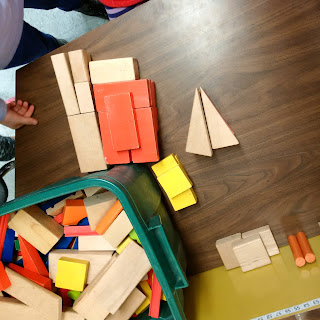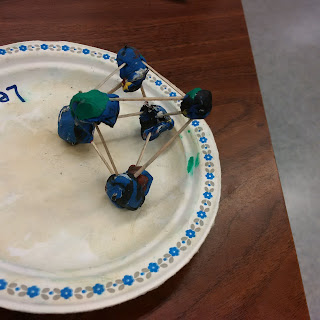Monday, 13 February 2017
Friday, 3 February 2017
Discrimination: The Lavender Llama
As all the students entered the open area for our Group Language lesson, the children with very dark or black hair were given stickers. Murmurs came from the group and the word "unfair" was spoken by more than one child. I asked for students to share how they were feeling and what they thought of what happened. The following words and statements were made:
I introduced the word discrimination and defined it as, "unfair treatment of one particular person or groups of people". I then read The Lavender Llama by Tandy Braid. It is a book about a llama whose mom is red and dad is blue. The llama learns about discrimination and how it can be defeated by love and knowledge.
Several students and staff gave examples of discrimination that they have experienced. The children then responded to their experiences during the lesson. Here are some examples of their work:
"The lavender llama was sad because he was the only lavender llama."
"I felt left out when the teacher didn't give me a sticker."
We finished the lesson with the following video. While all 120 students watched, the silence and looks on their faces spoke louder than words.
Sunday, 22 January 2017
Geometry Unit
In math this term we started off learning about shapes with Division 2 and 4. It's been super fun and the students have learned a lot. Below is an outline of the curriculum for Grades 1 and 2.
Grade 1 Big Idea
Objects and shapes have attributes that can be described, measured, and compared.
2D shapes and 3D objects:
· sorting 3D objects and 2D shapes using one attribute, and explaining the sorting rule
· comparing 2D shapes and 3D objects in the environment
· describing relative positions, using positional language (e.g., up and down, in and out)
· replicating composite 2D shapes and 3D objects (e.g., putting two triangles together to make a square)
Grade 2 Big Idea
Objects and shapes have attributes that can be described, measured, and compared.
2D shapes and 3D objects:
· sorting 2D shapes and 3D objects, using two attributes, and explaining the sorting rule
· describing, comparing, and constructing 2D shapes, including triangles, squares, rectangles, circles
· identifying 2D shapes as part of 3D objects
· using traditional northwest coast First Peoples shapes (ovoids, U, split U, and local art shapes) reflected in the natural environment
Below are photos of children working together in groups to sort shapes into 2 groups, then 3, and so on. After each sort, teachers came and guessed what attributes were used as the sorting rule. Some were really tricky to guess. My brain worked hard that day!!
Once the students had a grasp of some of the mathematical language used to describe shapes, they built 2D and 3D shapes with plasticine and toothpicks.
Another day, students were challenged yet enjoyed making figures from this website.
Saturday, 7 January 2017
FSA Tests for Grades 4 and Grade 7 Students
Although students at the Annex do not participate in these tests, you may have another child facing them. The information below may be helpful.
Subscribe to:
Comments (Atom)


































